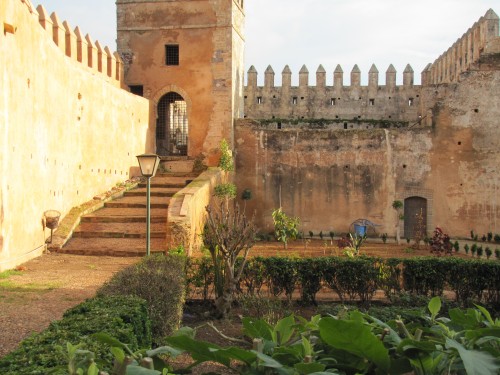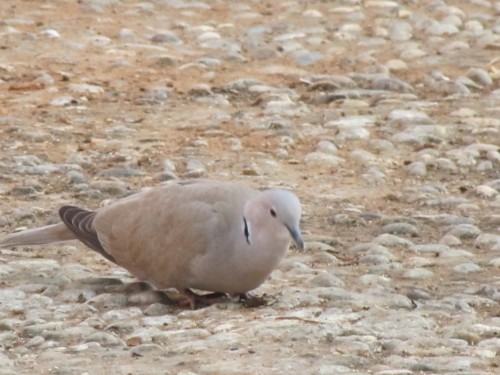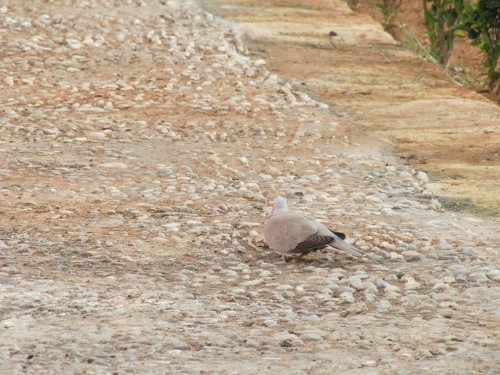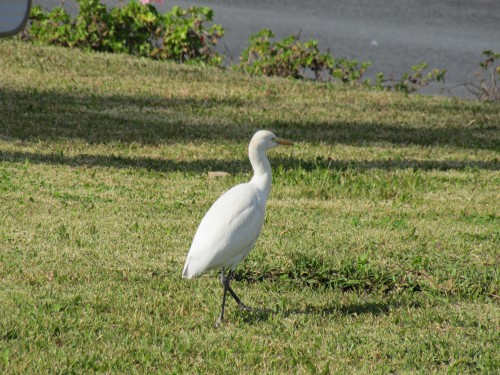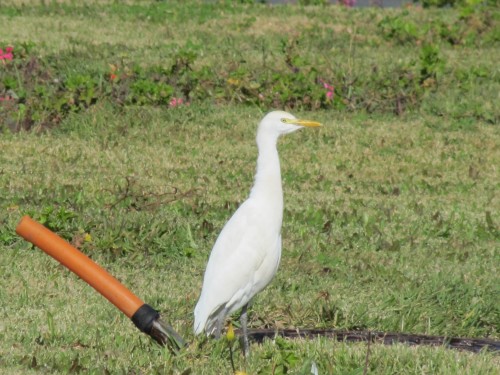Collared Dove, Rabat, Morocco
On our guided tour of Rabat in Morocco we walked through the interesting walled quarter known as the Kasbah des Oudaias. A part of this quarter was this beautiful garden. In the garden I managed a few hurried photos of a Collared Dove, shown below.
I use the expression “hurried photos” deliberately. The bird was moving around constantly, not stopping for more a a second or two in any one spot, making focussing something of a challenge, even though the bird was quite close. The bird won.
Still, it was nice to add another species to my list of Moroccan birds.
Common Kestrel, Rabat, Morocco
During our brief visit to Rabat in Morocco I had a few opportunities to do some incidental birding as we travelled around, and particularly whenever we went walking anywhere. At one spot next to the coast I saw the Common Kestrel shown in the photo above.
The photo is not a very good one as the bird was quite some distance away and for once the zoom on my camera let me down a little; the closer shots are somewhat blurry. It the photo above, the bird is looking down towards the water and rocks below. In the photo below I’ve zoomed out to show the location and general habitat of this particular bird.
Rock Doves, Rabat, Morocco
Rabat is the capital city of Morocco. During our tour of the country, we only had a few hours in this interesting city. Our tour only covered several historic and cultural sites, but most of these provided some opportunities for me to do some incidental birding along the way.
Like most large cities and towns around the world, Rock Doves are present, usually in large numbers. In many parts of the world these are feral populations, but in the case of these birds in Morocco, they are probably part of the endemic population. Northern parts of Africa make up part of their natural distribution.
White Stork, Rabat, Morocco
During our visit to Morocco we briefly visited the capital city, Rabat. One of the features of our short stay was a visit to the ancient Roman ruins of Sala Colonia. These old ruins were fascinating and the oldest historic buildings my wife and I had ever seen, though that was to change in the coming weeks.
From a birding point of view there were a few birds around but my main interest was in looking at the ruins and listening to our guide. The most prominent birds present were quite a number of White Storks on their nests, always perched on a high vantage spot. White Storks are large birds, measuring over a metre in height and with a wingspan of about two metres. Their prominent red bills and red legs stand out against their mostly white feathers – there is some black on the wings.
This was a new species for me and a delight to see, though it would be a common sight not only in Morocco but in many parts of Africa, Europe and even south western Asia. The massive nests are not easily overlooked either.
Cattle Egret, Rabat, Morocco
One of the common birds I saw during my visit to Morocco in December 2011 was the Cattle Egret. During the first few days – before we ventured into the drier eastern parts of the country – this species was probably the most common species I saw. Today’s photos were taken in the streets of the capital Rabat. This city has many wide thoroughfares, often with grass verges, an ideal feeding zone for this species.
At first I thought this was the Little Egret, a species I am familiar with here in Australia. I’ve also seen the Cattle Egret in a number of places in Australia, but the Little Egret is generally more common here. It was only when I arrived home, did some research and looked closely at the birds I had photographed. The yellow bill and the grey legs indicate Cattle Egret. I guess I was confused at first seeing that all the birds I saw showed no signs of the breeding plumage orange colouration. On reflection, this was the middle of winter in Morocco so it is not surprising that they were not in breeding plumage.
I also have another excuse: I was birding in a strange country with no field guide to the birds of that country.
